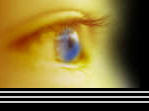Mad scientists are more than just stock characters of popular fiction. Through the long history of science, many people
have wandered off the well-marked highways of the scientific establishment and have walked instead the road less traveled.
Listening to their own muses, following their own visions, seeing something that “the fools” of the orthodox scientific
community were too blind to see for themselves, mad scientists pursue lines of research that are bizarre. Strange. Mad, if
you will. And while any crackpot can believe that he sees things that others can’t, sometimes these mad scientists show
that they did, after all, see better.
Consider the city of Syracuse in the time of the legendary Archimedes. In his day, 23 centuries
ago, weapons were usually pointy bits of metal and wood. Large catapults were the ultimate in weapons technology. Well, almost
the ultimate. They were the best that most armies had, but most armies didn’t have Archimedes of Syracuse, one of the
earliest mad scientists in history.
Picture, if you will, the perspective of someone in a boat off the coast of Syracuse during
a siege. Giant mechanical claws reached from the city and plucked whole ships up out of the water, smashing and sinking them.
Death rays (yes, death rays) mounted on the city walls set ships on fire, a feat that terrified the enemy as much from the
sheer mystery of it as from the burning of the ships themselves. The familiar catapults and other such siege engines were
employed by the city’s defenses, but they were frighteningly accurate, as if the engineers did not have to find their
ranges. And the ships of Syracuse were guided by navigational computers made entirely of clockworks.
Something seems to set Archimedes apart from not just most other people, but most other scientists
as well. In an era where technology and science were unbelievably primitive, he invented computers and fantastical weapons.
He did pioneering research into several areas of science and math as well. He revolutionized construction and farming equipment.
Everything he did, he did well. He seemed to have a spark of genius so powerful and creative that he could see things that
no one else could see, do things that no one else could do.
Of course, what is he known for in modern times? Having a stroke of genius in solving a difficult
problem and then jumping out of his bath and running naked down the street shouting “Eureka!” (“I found
it!”)
This touch of madness seems to be related to his superior ability to see possibilities and make
them real. It has been seen in others who were called mad scientists too. Such as Nikola Tesla, the nineteenth century inventor
who created not just the modern electrical system we all use today but also radio, robots, death rays, and more. He was well
known to have sudden “fits” wherein he would see blinding flashes of light and have waking dreams or hallucinations.
But these were no mere products of delirium. Instead he saw working machines, in realistic detail, down to the smallest part.
They were visions of solutions to the problems he was working on. He relied upon these visions so much that he rarely wrote
plans or diagrams; he just copied the pictures in his head.
Richard Feynman, the eccentric genius physicist who created quantum electrodynamics and was
instrumental in developing the atom bomb, also showed strange mental quirks in regards to his thinking. He saw written equations
in color, even if written in black and white, and he experimented with various methods of altering his consciousness. Einstein,
the largely self-taught genius who developed the theory of relativity, the “father of modern physics”, solved
problems by examining the pictures in his head. Carl Sagan, a speculative scientist, admitted that he saw all of his scientific
insights in a visionary state.
This seems to be what makes them “mad” scientists. Not anger, but insanity. They
are usually insane in a special way, a way that gives them insight beyond what others are capable of. In operating on their
own, outside the scientific establishment, they make discoveries that are not so easy to find within establishment thinking,
and so produce results that seem spectacular and unique.

